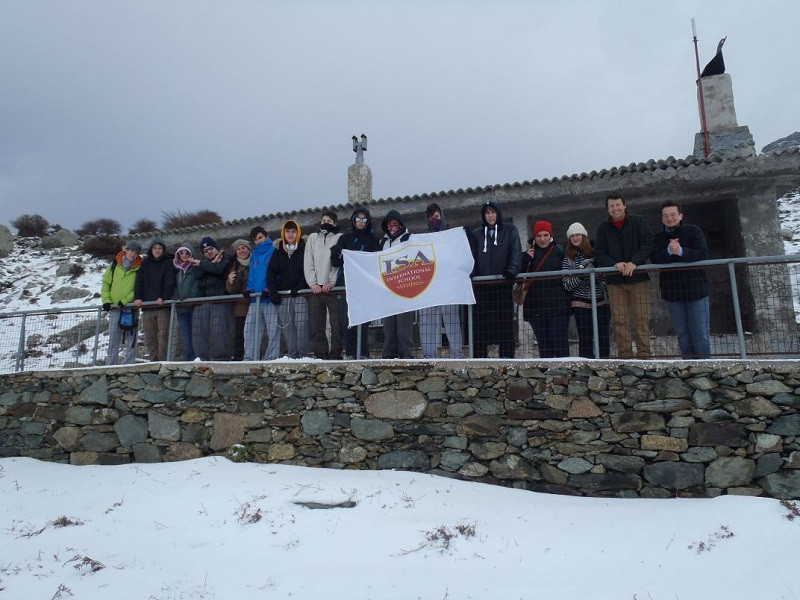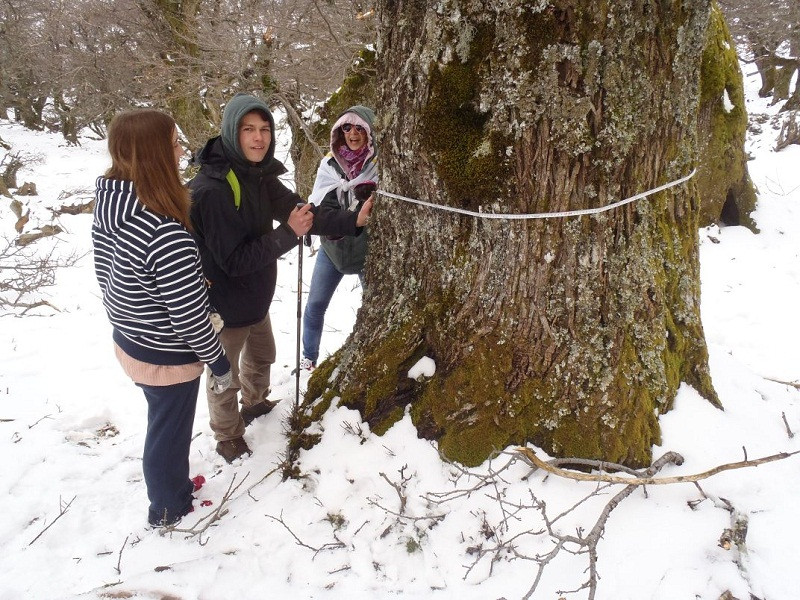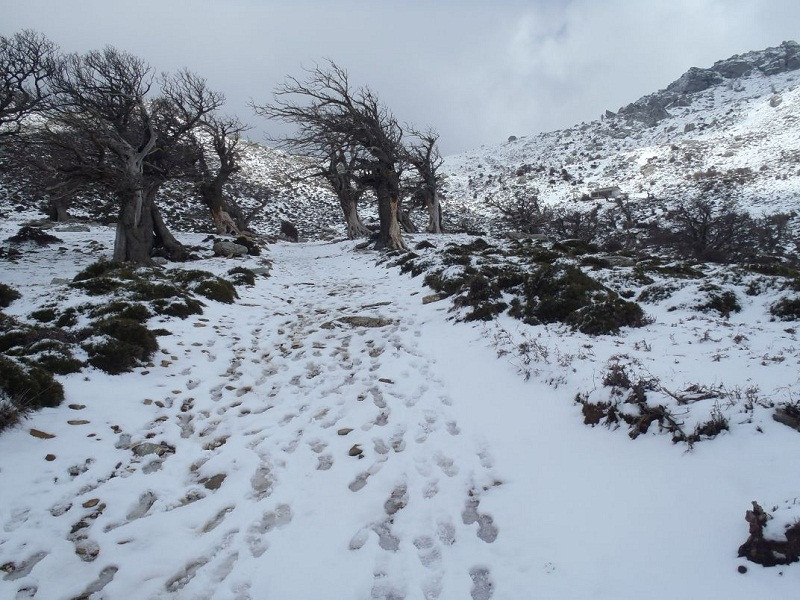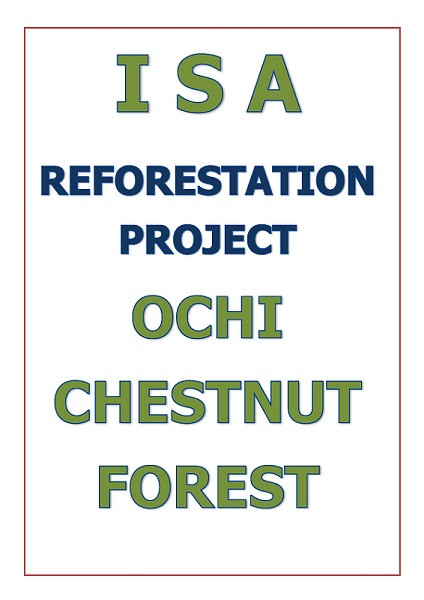REFORESTATION OF OCHI FOREST IN EVIA

ARTICLE: REFORESTATION OF OCHI FOREST IN EVIA
On Friday March 20th, 2015, a group of 10th grade students from the International School of Athens went on an overnight field trip to the Ochi forest region of southern Evia. The purpose of the trip was to check the health of the chestnut forest for a project on reforestation.
Mount Ochi is located on the southern edge of Evvoia and, together with Dirfis and Kandili, it is among the island’s biggest mountain ranges The forest of ancient chestnut-trees, at an elevation of 1000 meters, is a rare and wonderful thing to see in the overcrowded, ver used landscape of Greece. It is estimated that the forest has existed for thousands of years since prehistoric times. This makes the forest one of the last remaining ancient forests in Europe and in the world. The physical beauty of the slopes overlooking the Aegean sea make this a favorite destination for adventurous nature-lovers. There are plenty of good spots for free camping, either in the woods or by the sea and hikers can combine swimming with hiking. On the top of the mountain there is one of the best-preserved Dracospita (dragonhouses) on the island. The Ochi region is also home to the largest concentration of male peonies in Greece as well as other plants that are rare and endemic to Evia and Greece.
Although it is possible to hike to the refuge, our group chose to drive there – or so we thought! At Nea Styra where we got off from the ferry, we noticed that the weather was pretty warm. As the bus climbed the mountain road and we went closer to the peak, we noticed that the weather became colder, the road had become a dirt road and there was snow. We could even see our breath! On the way there we saw a glimpse of a fox and 5 rainbows. One of the rainbows was a full arch. Towards the end, we came face to face with a sudden winter snowstorm and had to get out and push the bus along the icy mountain road.
After slipping a couple of times in the snow, we arrived at the refuge. We got out our sleeping bags and put them on the beds. We ate some hot dogs, we played card games and we slept, with a wood stove for heat. In the morning we ate breakfast and went outside to prepare twenty-meters square quadrants which we used to measure the number of trees per square meter. We also measured the circumference of the trees we counted within the quadrants to see how old they are. We saw some animal tracks in the forest which seemed to be made by deer and rabbits. This is a good indication that the forest is healthy and able to support wildlife. After we have finished our job, we had a snowball fight!
The data that we collected about the forest will be used by the ninth grade class to prepare a plan for reforestation in the areas where the forest has been damaged or is weak. Human intervention has damaged the beauty of the natural landscape in various ways. Uncontrolled grazing by goats has resulted in damage to the young trees, which they eat, which damages the forest’s ability to regenerate. The scenery has been spoiled by the rows of wind-turbines, which have been put up without regards for the natural environment, and are linked through an extensive network of destructive roads.
I think that the trip was awesome. I would like to do it again in each of the other three seasons to gain more experience and to see how the mountain looks in other times of the year. I also want to see the drakospito, since the fog and the snow prevented us from hiking there. My favorite part of the trip was the snowstorm because it made me feel alive.




